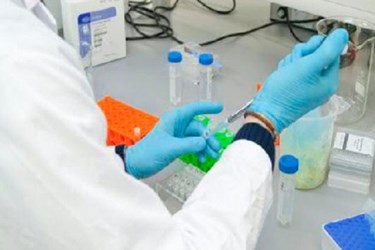Global Food-Safety Testing Market Continues To See Growth
By Melissa Lind, contributing writer

The global food-safety testing market is expected to reach $13.6 billion by 2019. Growing at a CAGR of 5.3 percent, the main growth areas are pathogen testing and testing for GMO foods
With an ever-increasing number of food-borne illnesses occurring around the globe, the market for global food-safety testing is flourishing. According to a recent report by BCC Research, Global Markets and Technologies for Food Safety Testing, the market is expected to reach $13.6 billion by 2019 and is growing at an average 5.3 percent. This is primarily due to strides in technology with advances that make testing faster, better, and less expensive.
Pathogen Testing
Incidences are relatively low in the U.S., but food-borne pathogens are a leading worldwide cause of death, making testing in developed areas important with regards to safety and consumer confidence. Testing for pathogens is the largest segment of pathogen testing, coming in at a value of $8.8 billion. This segment also has the largest growth rate of 5.5 percent. Pathogen testing most commonly includes infectious organisms, such as Salmonella and Campylobacter, but may include other organisms, such as E. coli.
GMO Testing
Consumers worldwide are highly skeptical of genetically-modified food and demand information regarding it. Testing for genetically modified organisms (GMOs) in food is growing worldwide. However, it is especially noticeable in Europe where the European commission requires documentation of foods containing GMOs. The GMO-testing market was valued at $371 million in 2013 and is expected to be valued at $476 million by 2019, growing at a CAGR of nearly 5 percent.
Toxin Testing
Though toxins remain a concern, testing for toxins is done less frequently and is not growing as rapidly as other markets. The toxin-testing market is still the second-largest segment with an estimated 2019 at $503 million, increasing at CAGR of only 2.5 percent.
Major growth drivers of the food-safety testing market are heightened consumer awareness and demand for information about safety, sourcing, and processing. Some other noteworthy influences are a more stringent regulatory environment, the desire of food-industry participants to protect public safety and the participants themselves, along with avoiding costly recalls and loss of consumer confidence.
Food-safety testing enables food producers, manufacturers, and processors to comply with increasingly-stringent regulations and to act in a proactive manner, rather than responding to an event after the fact. Prevention, rather than cure, enables food-industry participants to protect the public, adhere to regulations, and retain consumer confidence, all of which help preserve a company’s bottom line.
